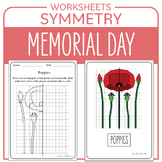113 results
9th grade statistics outlines
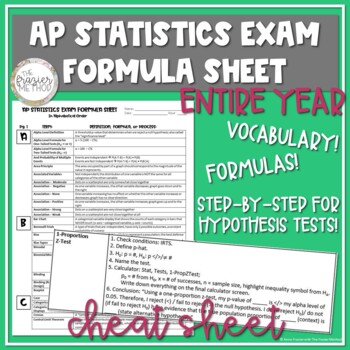
AP Statistics Review Vocabulary & Formulas for Entire Year, AP Stats Cheat Sheet
AN ENTIRE YEAR OF AP STATISTICS VOCABULARY, FORMULAS, & STEP-BY-STEP PROCESSES FOR CONFIDENCE INTERVALS AND HYPOTHESIS TESTS!!! Is AP Stats hard? Not with this all-in-one AP Statistics review of vocabulary, formulas, and step-by-step processes! Need some AP Statistics help? Use this product to help your students review for the AP Statistics Exam! This AP Statistics reference sheet includes definitions, formulas, and step-by-step processes for performing hypothesis tests and creating confiden
Subjects:
Grades:
9th - 12th
Types:

AP Statistics Review - Calculator Cheat Sheet for TI-84 Plus CE on AP Stats Exam
AN ENTIRE YEAR OF STATISTICS CALCULATOR FUNCTIONS for the TI-84 PLUS CE or TI-84 PLUS!!! Is AP Statistics hard? Not with this all-in-one AP Statistics calculator cheat sheet! Use this AP Statistics worksheet of calculator functions to help your students review for the AP Stats Exam! This AP Statistics reference sheet includes calculator functions from Units 1-7 - such as linear regression, probability formulas, graphs, re-expression, confidence intervals hypothesis tests, and more! This is a one
Subjects:
Grades:
9th - 12th, Higher Education
Types:
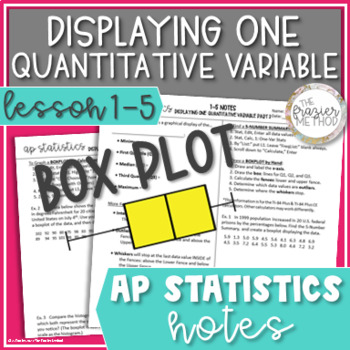
AP Statistics Notes Box Plot / Boxplot, Quartile, IQR, Outlier, 5 Number Summary
AP Stats notes to teach or review BOXPLOTS / BOX PLOTS / BOX-AND-WHISKER PLOTS! Define & calculate the median, interquartile range, 5-Number Summary, minimum, maximum, first quartile (Q1), third quartile (Q3), and percentiles for a set of data. Also, determine which data values are outliers based on the upper fence and lower fence of a boxplot. Students will graph box plots by hand given just a few of the data values and with step-by-step TI-84 Plus CE Calculator directions given the full li
Subjects:
Grades:
9th - 12th
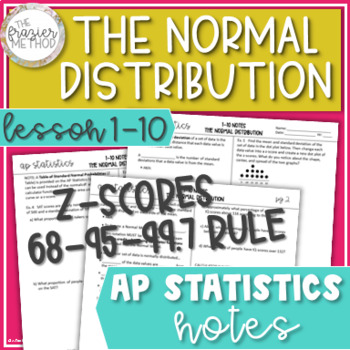
AP Statistics Notes Normal Distribution Z-Scores Empirical Rule Normal Model
Great AP Stats notes on the NORMAL DISTRIBUTION & Z-SCORES! Students will use the Normal Model and Empirical Rule (68-95-99.7% Rule) to find a data value, calculate z-scores, and find the area under the Normal curve using both the z-score formula and TI-84 Plus CE calculator functions. Students will also interpret z-scores in context, write the Normal Model notation N(µ, σ), and determine whether a data value can be considered “unusual.” Perfect for AP Stats Exam review prep! Aligns with AP
Subjects:
Grades:
9th - 12th

AP Statistics Notes Histograms, Dot Plots, & Stem-and-Leaf Plots - Data Displays
AP Stats notes to teach or review graphing and reading DOT PLOTS, STEM-AND-LEAF PLOTS, & HISTOGRAMS! Students will graph histograms using a TI-84 Plus CE Calculator and graph a dot plot and stem-and-leaf plot by hand. Practice problems and examples include answering questions about a set of data values displayed in a histogram. Great for AP Stats Exam prep! Aligns with AP College Board's updated 2019-2020 objectives and standards for AP Statistics Unit 1: Exploring One-Variable Data. WHAT’S
Subjects:
Grades:
9th - 12th
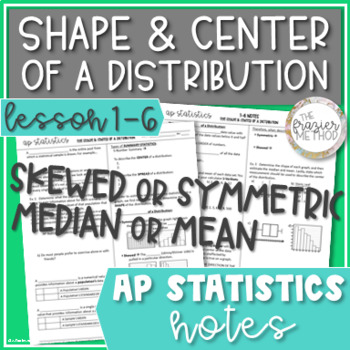
AP Statistics Notes Shape & Center of Distribution, Median Mean, Skew Symmetric
Here's AP Stats notes on SHAPE & CENTER OF A DISTRIBUTION – SYMMETRIC OR SKEWED, MEDIAN & MEAN! Calculate the median and mean from a list of data values and estimate the median and mean from a histogram, boxplot, stem-and-leaf plot, dot plot, and cumulative relative frequency plot. Determine which measure of center to use based on the shape of the distribution – skewed or symmetric. Other terms defined in these notes include sample, population, statistics with symbols, parameters with sy
Subjects:
Grades:
9th - 12th
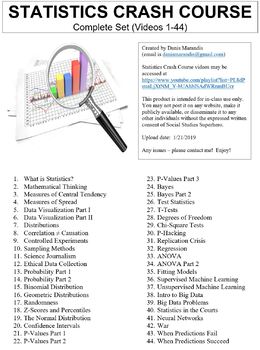
Crash Course Statistics Worksheets Complete Series Set Full Bundle Collection
This ZIP file contains Microsoft Word document worksheets (along with PDF versions) for each of the forty-four episodes of Crash Course Statistics hosted by Adriene Hill.Worksheets contain a combination of fill-in-the-blank and short answer questions. Each worksheet is accompanied with an answer key and relevant images.By purchasing this file, you agree not to make it publicly available (on external websites, etc.) or to share with any other teachers. It is intended for classroom use only. You *
Subjects:
Grades:
9th - 12th, Higher Education, Adult Education, Staff
Types:

AP Statistics Notes Describe the Distribution Shape, Center, Spread, Outliers
AP Stats notes on DESCRIBE THE DISTRIBUTION! Describe the shape as skewed or symmetric, center with median or mean, spread with standard deviation or interquartile range, and unusual features of histogram, box plot, stem-and-leaf plot, dot plot, & cumulative relative frequency plot. Also determine which measure of center (median or mean) and measure of spread (range, standard deviation, or interquartile range) to use based on the shape of the distribution (skewed or symmetric). Other terms d
Subjects:
Grades:
9th - 12th
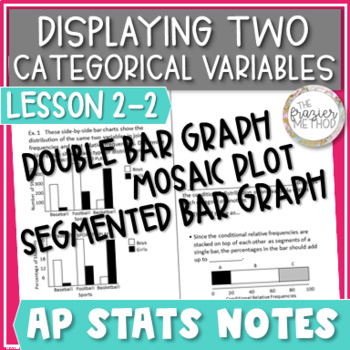
Segmented Bar Graph, Side-by-Side Bar Graph, & Mosaic Plot - AP Statistics Notes
AP Stats Notes on graphing two categorical variables in a SEGMENTED BAR GRAPH, SIDE-BY-SIDE BAR GRAPH, & MOSAIC PLOT! Identify which graph(s) can display joint frequencies, joint relative frequencies, and/or conditional relative frequencies (conditional distribution). Define and distinguish between independent and associated variables. Great for AP Stats Exam review prep! Aligns with AP College Board's updated 2019-2020 objectives and standards for AP Statistics Unit 2: Exploring Two-Variabl
Subjects:
Grades:
9th - 12th
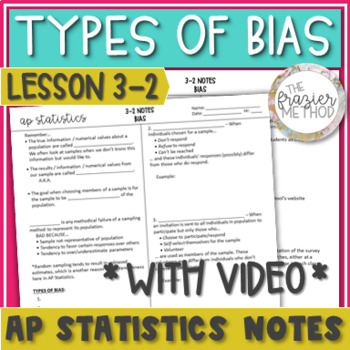
AP Statistics Notes WITH VIDEO - Types of Bias / Sources of Bias
These AP Statistics NOTES WITH VIDEO will help you teach the TYPES OF BIAS – undercoverage bias, nonresponse bias, voluntary response bias, response bias, question-wording bias, and self-reporting bias! Students will identify the different ways each type of bias may present itself, see examples of each type, and examine how non-random sampling methods introduce potential bias. AP Statistics students will also utilize clear instructions for how to answer AP free-response questions involving bias.
Subjects:
Grades:
9th - 12th
Types:

AP Stats Notes Spread of a Distribution, Standard Deviation, Interquartile Range
AP Stats notes on the SPREAD OF A DISTRIBUTION – STANDARD DEVIATION, RANGE, & INTERQUARTILE RANGE! Calculate spread from a list of data values and estimate spread of distributions displayed in a histogram, boxplot, stem-and-leaf plot, dot plot, and cumulative relative frequency plot. Also determine which measure of spread to use based on the shape of the distribution – skewed or symmetric. Use these notes as an AP Stats review for the AP Statistics Exam! Aligns with AP College Board's update
Subjects:
Grades:
9th - 12th
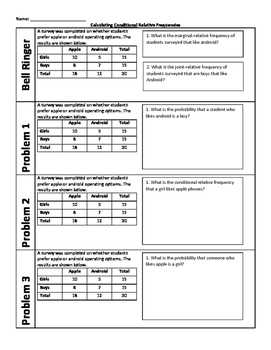
Conditional Relative Frequency (Guided Notes + Stations + Exit Ticket)
This resource contains guided notes on calculating conditional relative frequency for a two-way frequency table that presents interesting information for students. The guided notes are followed by 8 stations with a recording sheet, that asks students questions about conditional frequencies as well as joint and marginal frequencies for review purposes. These stations can be used the same day as the guided notes, or on another day for review. Also included is an exit ticket that focuses on conditi
Subjects:
Grades:
8th - 9th
Types:

Correlation Coefficient for Scatterplots / Scatter Plots - AP Statistics Notes
Great AP Stats Notes on CORRELATION COEFFICIENT (r)! Includes step-by-step TI-84 Plus CE Calculator directions to calculate correlation coefficient from data values and estimate r using a scatterplot / scatter plot – perfect, strong, moderate, weak, positive, & negative correlation. Also learn how changes to the data values affect the correlation coefficient, make contextual deductions based on the correlation coefficient, and identify a possible confounding variable / lurking variable to va
Subjects:
Grades:
9th - 12th

Best Fit Line Equations (Guided Notes/Practice)
These 3 problems are perfect for introducing students to finding the linear equation of a best fit line. The problems ensure students understand the meaning behind the correlation coefficient and the y-intercept. This helps students realize the importance of the linear equation. The extensive problems help review concepts that are important for successfully writing a y = mx + b equation for a best fit line.The answer key provides the exemplar for problem #1. If you want all students getting the
Subjects:
Grades:
8th - 9th
Also included in: Scatterplots Bundle (Weeks of Products!)
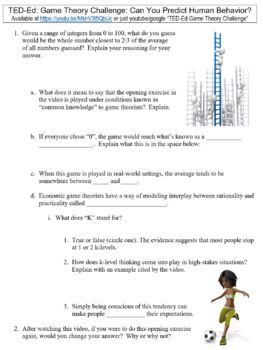
TED-Ed worksheet: Game Theory Challenge: Can You Predict Human Behavior?
This is a zip file that contains a Microsoft Word worksheet (along with a PDF version) to accompany the TED-Ed video for "Game Theory Challenge: Can You Predict Human Behavior?". Answer key is included as well.By purchasing this file, you agree not to distribute it to other non-students. It is intended for classroom use only, but may be used for distance learning as well as long as it is not made available outside of your students.=====Interested in Crash Course worksheet bundles?ALL Crash Cour
Subjects:
Grades:
9th - 12th, Higher Education, Adult Education, Staff
Types:

AP Statistics Scatterplots Notes / Scatter Plots & Describe the Association
Great AP Stats Notes on scatterplots! AP Statistics Notes to graph SCATTER PLOTS & DESCRIBE THE ASSOCIATION of two quantitative variables. Step-by-step TI-84 Plus CE Calculator instructions to graph scatterplots. To describe the association of two variables, determine their strength [strong, moderate, or weak], trend / direction [positive or negative], unusual features [outliers, gaps, & clusters], and form [linear or non-linear]. Also use as AP Stats Exam review prep! Aligns with AP Col
Subjects:
Grades:
9th - 12th
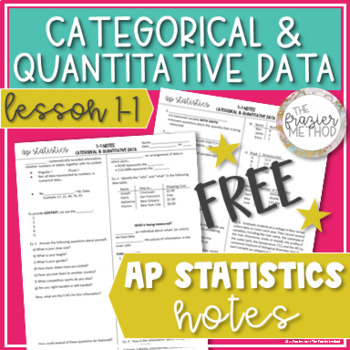
AP Statistics Notes - Categorical and Quantitative Variables, Data Table, FREE
With definitions, examples, & practice problems, these AP Statistics notes will help you teach or review CATEGORICAL & QUANTITATIVE VARIABLES whether you’re teaching in-person or distance learning! Students will define data, context, cases, records, respondents, subjects, participants, experimental units, and variables. In addition to distinguishing between categorical, quantitative, and identifier variables, AP Statistics students will write a context sentence using the 5 W’s and identi
Subjects:
Grades:
9th - 12th
Types:
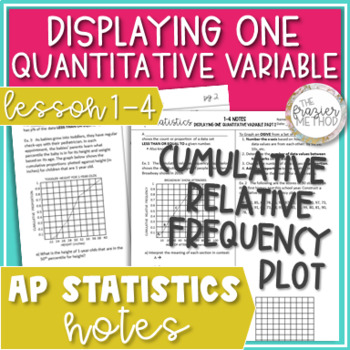
AP Statistics Notes Cumulative Relative Frequency Plot / Ogive Data Display
Here's AP Stats notes to help you teach or review CUMULATIVE RELATIVE FREQUENCY PLOTS / OGIVES! Students will define, calculate, and interpret percentiles for a set of data in a cumulative relative frequency graph. Students will graph - and answer questions about - a set of data values in a cumulative relative frequency plot. Use these notes pages as an AP Statistics review for the AP Stats Exam! Aligns with AP College Board's updated 2019-2020 objectives and standards for AP Statistics Unit 1:
Subjects:
Grades:
9th - 12th

2017-2018 AP Statistics Pacing Guide
With 2017-2018 AP Statistics Pacing Guide, your planning for the year is done! I've taken the standards and learning targets for AP Statistics and organized it for the year. It is one-sheet that is organized and user-friendly. You will know what to teach each day and know what topics are coming up. Non-teaching days are taken into account, such as testing, staff development days, etc. I hope that this helps you in your planning!Please review if you purchase! Thank you!Other 2017-2018 Mathematics
Subjects:
Grades:
9th - 12th, Higher Education, Adult Education, Staff

AP Stats Notes Two-Way Tables / Two Way Frequency Tables / Contingency Tables
AP Stats notes on CONTINGENCY TABLES / TWO WAY FREQUENCY TABLES / TWO-WAY TABLES data displays! Great AP Stats review or AP Stats Exam prep! Students will create two-way tables that display joint frequencies, joint relative frequencies, and conditional relative frequencies (conditional distribution) as well as answer questions about the data in the tables. Students will also define and calculate joint frequency, joint relative frequency, marginal frequency, marginal relative frequency, and condi
Subjects:
Grades:
9th - 12th
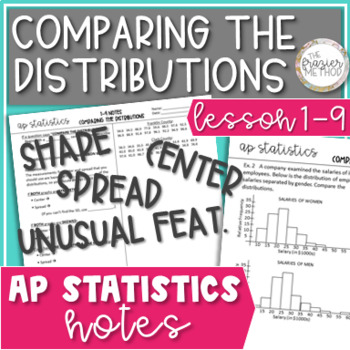
AP Statistics Notes Comparing Distributions Shape, Center, Spread, Outliers
AP Stats notes on COMPARING DISTRIBUTIONS! Compare the shape, center, spread, and unusual features of distributions displayed in histograms, boxplots, and stem-and-leaf plots. Also determine which measure of center (median or mean) and measure of spread (range, standard deviation, or interquartile range) to use based on the shapes of the distributions – both skewed, both symmetric, or one of each. Perfect for AP Stats Exam review prep! Aligns with AP College Board's updated 2019-2020 objectives
Subjects:
Grades:
9th - 12th
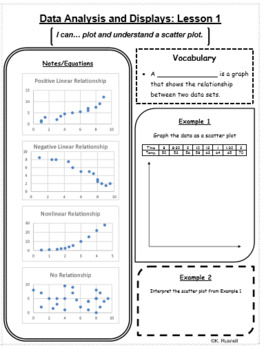
Data Analysis and Displays Notes
These guided notes are created to help differentiate and guide instruction for the math curriculum. This set of notes has been written based off of 8th grade standards and follows the Big Ideas Curriculum, but can be used for similar grades. Each page of notes includes an "I can" statement, vocabulary, student notes, step-by-step guides, examples, and story problems. Each notes is reduced to one page for quick reference. The vocabulary cards that go along with the vocabulary within the notes can
Subjects:
Grades:
6th - 10th
Types:
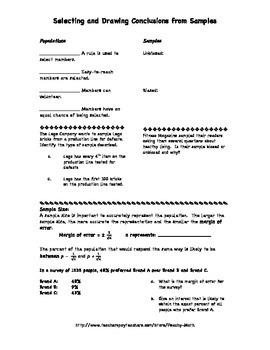
Statistical sampling and questioning of populations
This worksheet was created to review section 11.4 Select and Draw Conclusions from Samples in McDougal Little Algebra 2. It reviews the following concepts:
Population
Samples
Self-Selected Sample
Systematic Sample
Convenience Sample
Random Sample
Unbiased Sample
Biased Sample
Margin of error
Subjects:
Grades:
8th - 11th
CCSS:
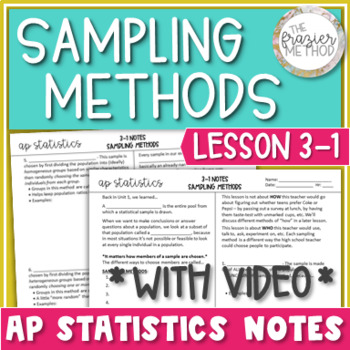
AP Statistics Notes WITH VIDEO - Sampling Methods (Stratified, Cluster, SRS)
Use these AP Stats NOTES AND VIDEO to teach all 7 SAMPLING METHODS : simple random sample (SRS), stratified sample, cluster sample, systematic sample, convenience sample, multistage sample, & census. You can also use these notes for as AP Stats Exam prep or as an AP Stats review! This product requires NO PREP, making it a perfect substitute lesson / sub plan! Aligns with AP College Board's updated 2019-2020 objectives and standards for AP Statistics Unit 3: Collecting Data. WHAT’S INCLUDED I
Subjects:
Grades:
9th - 12th
Types:
Showing 1-24 of 113 results

